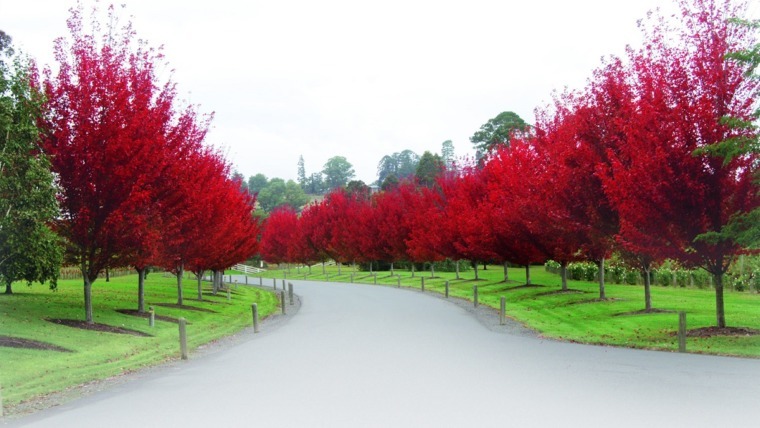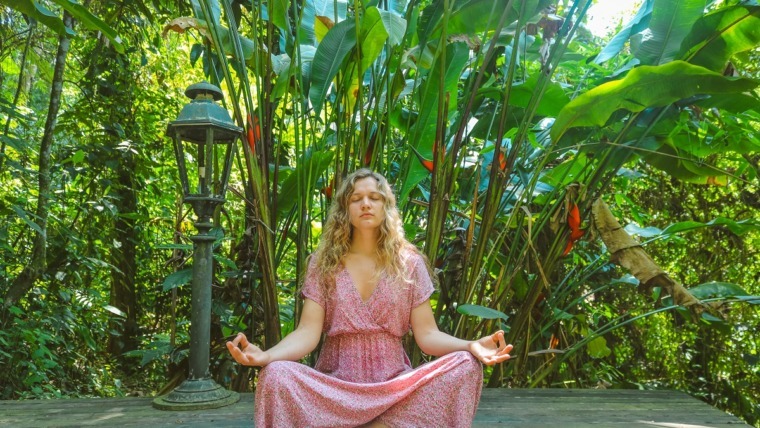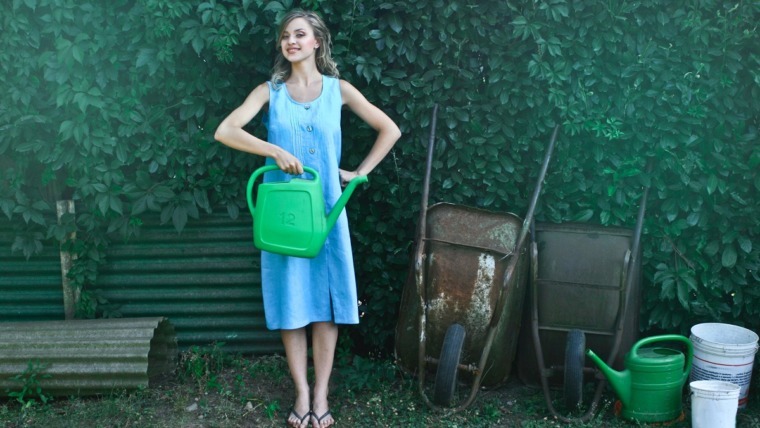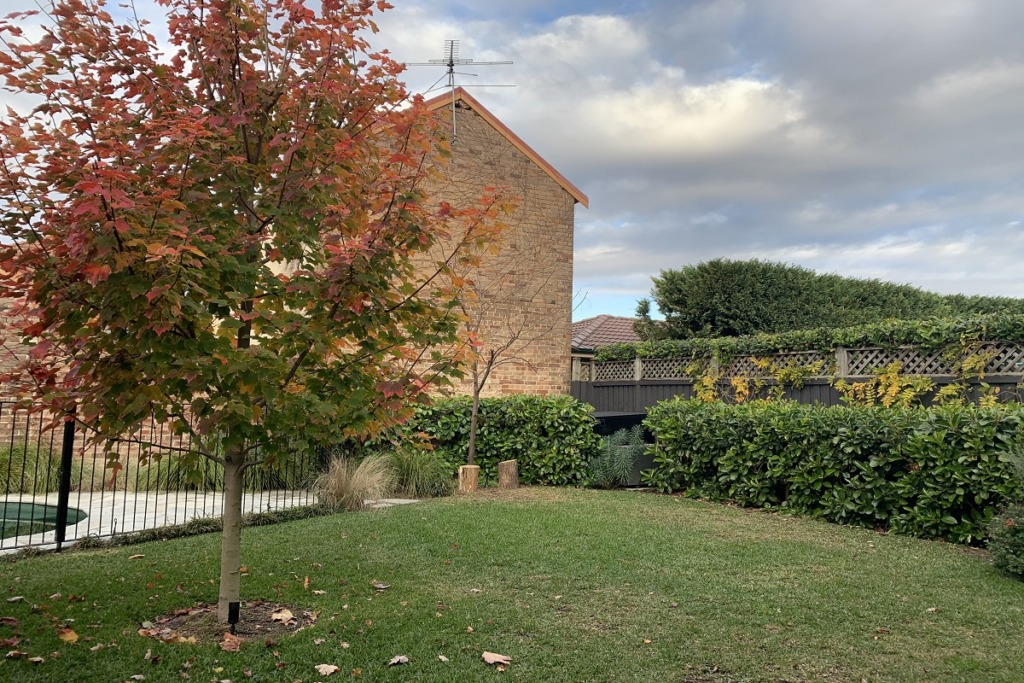
How To Create Green Garden Walls
Written by Annabelle Drew
One of the first things I do when I undertake a back garden make-over or design a new landscape for my clients is to plan for hiding the boundaries.
Suburban timber paling or metal fences box us in, surrounding us with man-made, often unattractive walls which limit the feeling of being in a garden or surrounded by nature.
My goal is to create a green oasis for clients, and the best way to do this is to create a living, leafy framework around the space with planting. There are a couple of ways to achieve this. Planting hedges and creeping plants. Read on to find out about both.
HEDGES
Long term, the easiest and most cost-effective way to create green walls is to plant hedges around the perimeter of the garden.
Preparing and Planting Your New Hedge
Firstly, paint the boundary fence a dark colour, such as Dulux ‘Monument’. This will help the fence visually disappear and makes the green foliage ‘pop’ in front.
Next, prepare the soil well. Use a hoe (mechanical or hand) to cultivate new organic soil into the existing soil to a depth of about 300mm. Add some slow-release fertiliser as you do this.
Next, order your plants. If your budget allows, purchase large specimens with a purchase pot size around 300mm to 400mm. If you are on a tight budget, then smaller plants in say 200mm will be fine. You just have to have a bit more patience waiting for the plants to grow into a hedge.
Calculate how many plants you’ll need. Most hedge plants that reach over 2m should be planted at about 800mm apart to eventually create a dense hedge. So divide the fence length where you want to plant a hedge by 0.8m to get the number of plants required.
Hedge Maintenance
Like lawn, a hedge requires cutting, but unlike lawn, which requires moving almost weekly in summer, most hedges require only two to six trims a year to keep their height in check and their front and back vertical.
Use shears or a hedge trimmer to create a flat surface and top. Aim to keep the hedge to a height of around 2m, or above the top of the boundary fence, and width to 600mm to 800mm deep, so that it doesn’t take up too much of the garden space. Pruning laterally also encourages better foliage growth down lower, so you don’t end up with a woody ‘undercarriage’.
Apply mulch to the garden beds at the base of the hedge with a quality organic mulch. The depth should be minimum 75mm. Keep the mulch clear of the base of the trunks to avoid disease in the plants. Fertilise the plants each spring to improve the health and growth rate.
My Top Three Hedge Plants
- Emerald Lustre Sweet Viburnum - Viburnum odoratissimum ‘Emerald Lustre’
Lush, glossy large leaves are the key feature of this fabulous, low-maintenance hedge. Viburnum grows relatively quickly and provides dense foliage. Scented white blooms appear in late spring, followed by small dark berries. It doesn’t mind shade, nor coastal spray, and larger leaves for hedges generally means less clipping. You don’t get the clean edge you do on finer leafed hedge plants, but the softer, more organic edge is a lovely backdrop to any garden.
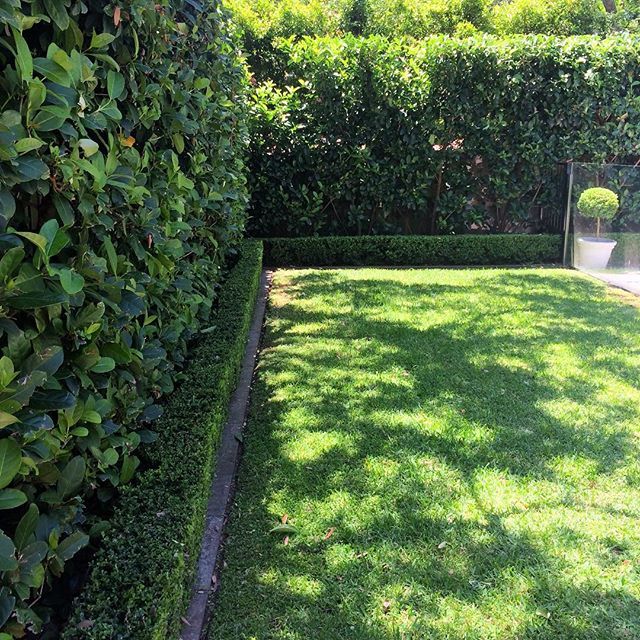
2. Lilly Pilly – Syzygium australe
A quick-growing, hardy Australian native plant that creates a beautiful dark hedge with contrasting new growth of copper, pink or red, depending on the cultivar. After a summer display of white, fluffy blooms, a pretty display of purple berries form, which is edible. The foliage is dense and fine, which means more clipping than large-leafed hedge plants. The Lilly Pilly likes full sun to semi-shade and is one of the least thirsty of the hedge plants. Note that Lilly Pillys can sometimes be attacked by psyllid insects. The cultivar ‘Resilience’ has been created to resist these attacks.
3. Slender Weaver’s Bamboo – Bambusa textilis var. ‘Gracilis’
The fastest-growing for the quickest of green walls, the bamboo offers a beautiful lime-green screen that gently moves and rustles in the wind. The Slender Weaver’s Bamboo is hardy, likes full sun to part shade and is tight clumping, so doesn’t take up much room. It’s great in pool areas where the leaf-shedding is less than other hedges and it can comply with the ‘no-climb pool fence regulations. The base stems, or culms, of the bamboo, eventually grow clear of foliage, so planting another layer of plants in front may be needed to conceal the fence behind. Be aware that some varieties of bamboo are invasive and best left out of a suburban backyard. I select the Slender Weaver as it’s well behaved and only creeps minimally from where originally planted.
CREEPING PLANTS
If your garden is very small, perhaps more of a courtyard or even a little lightwell, a hedge may take up too much of the valuable space, even it is kept trimmed very narrow. But there are a couple of great ways to create a green wall without taking up the room that a hedge would.
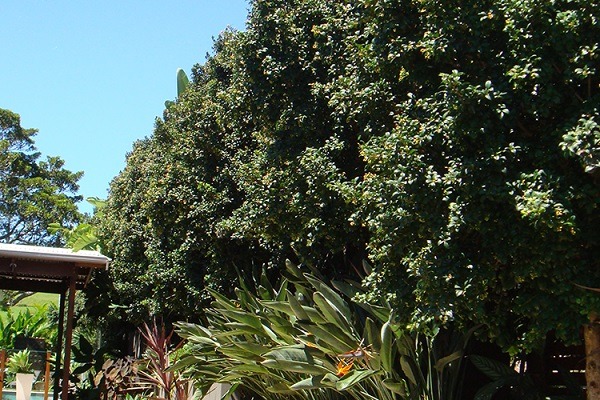
Self-clinging Climbing Plants
Plant a Boston Ivy for a living wall that changes colour through the seasons, turning from lush green in spring and summer to bright crimson in autumn. Boston Ivy (Parthenocissus tricuspidata) loses its leaves in winter, allowing light onto the wall or fence. If the wall faces north and you want sunlight reflected into the garden in winter, paint the wall a light colour such as Dulux ‘Shale Grey’ and allow the Boston Ivy to cover it.
If an evergreen solution is required, a Creeping Fig (Ficus pumila) is a great choice. When the wall is covered and the plant is kept clipped (I trim mine about three times a year), it looks just like a hedge and so adds a perceived depth to the space.
Climbing Plants On A Frame
If you love a creeper that requires a frame to support it, you can fix stainless steel wires onto a fence or wall, ensuring the wire sits out a little from the wall so that the plant can wrap around the wires. You can achieve this by connecting the wires to steel eyelets which sit out 30mm to 40mm from the wall or fence surface. You can either have the wires horizontal, vertical, which gives an interesting effect, or even in a diamond pattern.
Then you plant a lovely creeper such as a Chinese Star Jasmine (Trachelospermum jasminoides) or the lovely Australian native vine Lady Di Bower Vine (Pandorea jasminoides ‘Lady Di’). Both are evergreen and have lush green foliage and white flowers. The Star Jasmine has a gorgeous scent in spring, the Lady Di has larger more showy white blooms from late winter to mid-summer.
photos:
- ‘Cammeray Garden’ designed by Annabelle Drew, photo A Keeler
- ‘Sweet Viburnum hedge_@kylieredden Instagram’ is from Kylie Redden on Instagram
- ‘Lilly Pilly_Screening & Hedging Plants’ is from https://www.screenhedgeplants.com.au/
- ‘Slender Weavers Bamboo_Bamboo Landscape Plants’ is from https://www.bambooland.com.au
- ‘Trachelospermum jasminoides2’ is by Annabelle Drew

